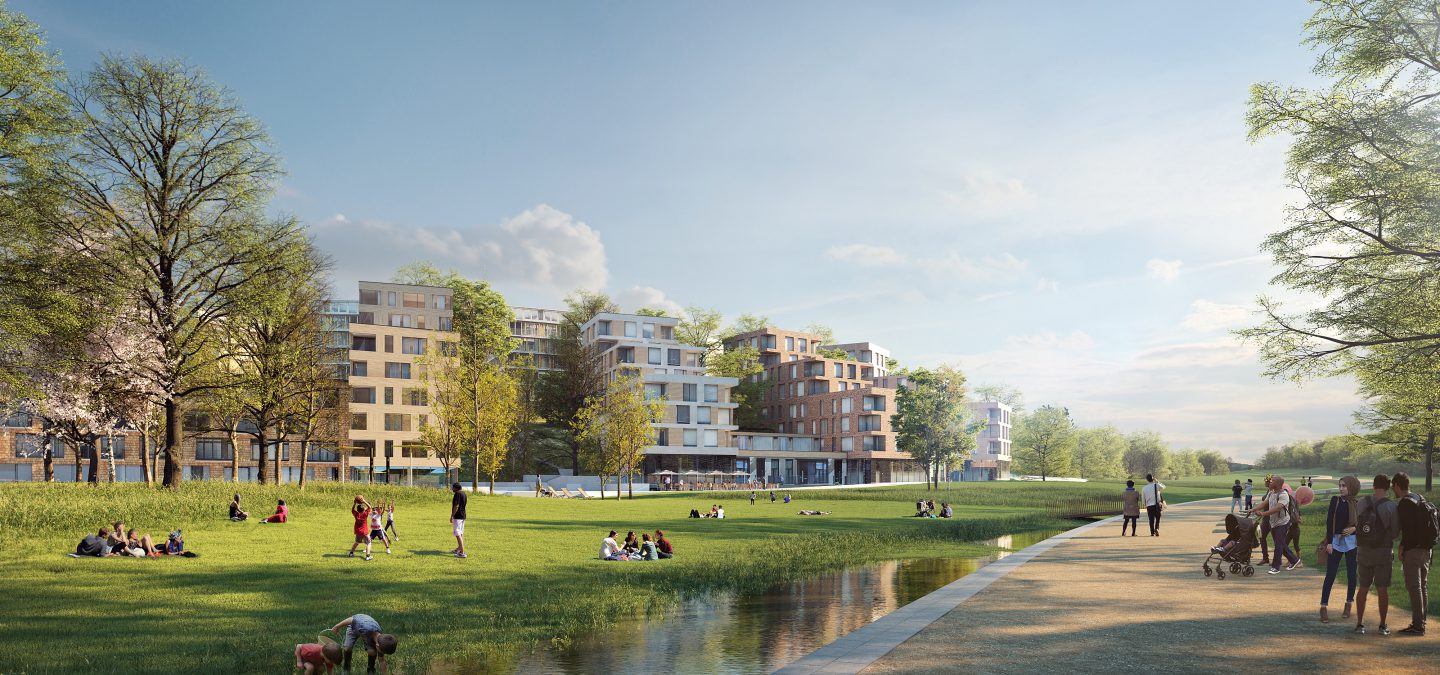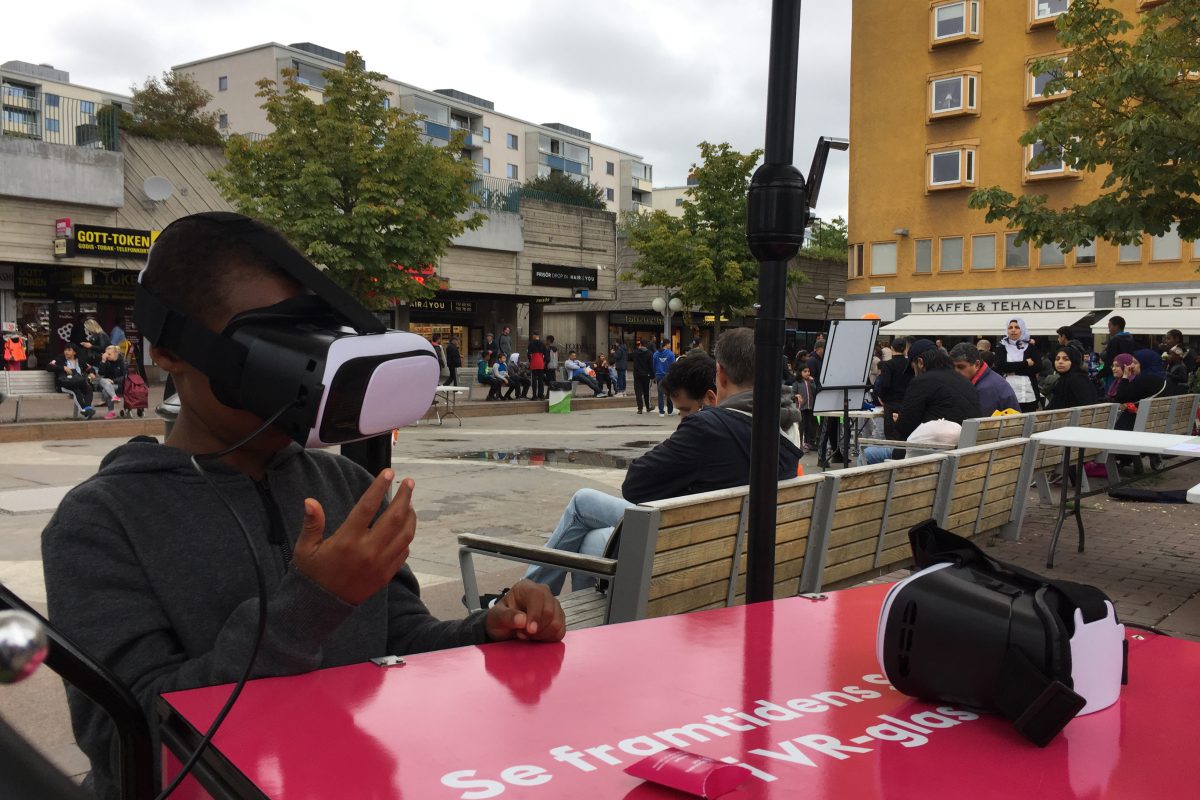
Keep up with our latest news and projects!

Sweden, and particularly Stockholm, is often referred to as one of the best places to bring up your family. Swedes are proud to live in a country that ratified the UN convention on the rights of the child, UNCRC in 1990. Over the last few years, Stockholm has been one of the fastest-growing cities in Europe, its population set to increase by 11% until 2020. In city planning terms this means that the city planning administration of Stockholm City needs to plan for 120.000 new dwellings until 2035, but as we all know, building a city is more than building housing.
In order to make sure that the city of Stockholm develops in a sustainable and child-friendly way, the city called together experts under the leadership of the planning administration. The development, culture, sports and education departments and the traffic office were all represented, alongside key stakeholders. The experts formed the working group, City at Eye Level, that has the sole purpose of ensuring that city planning lives up to the goals of UNCRC.
During the method development process, the children of the city were involved in a number of workshops. The method, “Integrated Child Impact Assessment” (ICIA), introduces the right of the child early on in the city planning process, ensuring that the needs of coming generations are secured. ICIA is intertwined with the planning process and manifests itself in the final plans, and thus eventually in the built city.
1. Participation and Mapping – Catching both the child perspective and the perspective of the child.
2. Developing and Analysing – The proposal alongside the latest scientific research.
3. Evaluation of the final proposal – Positive and negative consequences of the proposal.
4. Feedback – The method also lifts the importance of continuous feedback for the participants.
In order to ensure that as many aspects of children’s needs, relating to city planning, are covered, three main question categories were formed:
1. Environment and Health: Questions regarding environmental
aspects such as noise, air and ground pollution as well as access to sun and shade.
2. Housing and Everyday Life: Questions regarding access to housing, public amenities, activities regardless of gender, age, socio-economic background, ethnicity and abilities.
3. Safety and Accessibility: Questions regarding public transport,
traffic, walking and cycle paths.
Every project is unique and it is important that each project decides early on which specific questions are more important, through analysis, mapping and dialogue. These are questions that could form the overall goals, and highlight the needs of the children.
Skärholmen was built in the 1960 ́s and is located on the outskirts of Stockholm. Skärholmsdalen includes 900 homes, a nursing home, business premises and pre-schools. Social sustainability is a focal point.
As a first step, the whole of FS was covered and dialogues were held with 256 children, aged between 6-15 years old. Additionally, teachers from 19 pre-schools were interviewed. The children identified places they liked, disliked, and those which ignored children’s needs became clearly visible. The analysis was carried out on the present situation connected to scientific studies, for example, regarding traffic, safety and the need for green spaces.
Next, Skärholmsdalen analysed the results and identified specific pre-requisites to focus on. Skärholmsdalen created 5 goals regarding children’s needs in urban development. The goals focused mainly on the need for outdoor space connected to new homes, pre-schools and public green space but also to ensure that the streets will be designed to enable children to move freely with space for biking and eyes on the streets. When developing the urban plans architects, planners and developers were asked to let the goals lead the way, when balancing conflicting interests.
 The Skärholmsday- see into the future of Skärholmen
The Skärholmsday- see into the future of Skärholmen
Before the plans were presented for public consultation an evaluation of the final proposal took place. To ensure that the project was reviewed with fresh eyes and objectivity, consultants were brought in to carry out the analysis and concluded that many of the goals had been met.
During the process, the feedback was given to participating schools and nurseries. This was to ensure that the mapping of needs was correct, but also to maintain efficient communication so that the participants know what the next steps are in the planning process.
The project group felt that this great result was achievable due to the fact that the needs of children were addressed early on in the process, thus becoming a natural part of the design brief. By having child experts as part of the design team in stage 2, the rights of the child perspective were incorporated into the masterplan. The process has ensured that key decisions have been made early on, and will be carried through into the detailed planning.
This article belongs to a series of stories about the city at eye level for kids! You can access the full book online in PDF or pre-order your hardcopy to be delivered to your home.
Get your book here